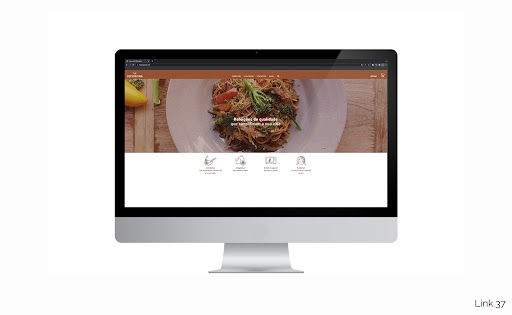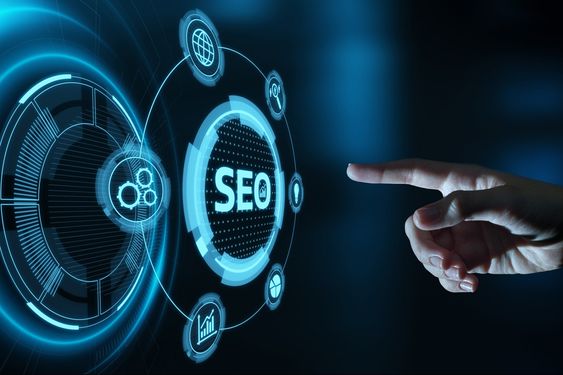E-commerce – How to start an online business? Part I
More than a trend, starting an online business is a modern-day necessity, a way of re-evaluating business, reinventing yourself and standing out from the competition.
“The Best way to predict the future is to create it.” Peter Drucker
The number of companies operating online, whether start-ups or big brands, has increased exponentially in recent years, but the real boom came with the Pandemic, which dramatically changed consumer behaviour and accelerated the use of digital media and the ease of online shopping.
Table of Contents
E-commerce or electronic commerce refers to all commercial or financial transactions that involve the transfer of information over the internet. This concept applies not only to big pure e-commerce companies, such as Amazon or eBay but to start-ups and small retail businesses that realise that, despite the importance of the “touch” on products provided by physical sales, this can be strengthened through a savvy link with online sales. And the most appealing thing is that it allows you to understand, through a set of metrics, the strategies to implement to be successful.
2. How can I start an online business?
There are essentially 2 approaches that can and should be complementary, such as selling through an e-commerce website or creating your online shop.
Selling through an operator like Amazon can be interesting because:
- It allows you to benefit from the software already in place;
- It gives you an extensive customer base;
- It generates sales quickly.
However, this option is mainly beneficial for established brands whose strategy aspires to global positioning.
Yet, these operators:
-
- Make the main strategic decisions on the sale of products;
- Earn their commission for each product sold;
- They own the customer database.
Before opting exclusively for this platform, you might consider also creating your online shop, your website, to carry out your e-commerce. This option:
- It is more expensive initially because despite not paying third-party sales fees, it requires investing time and money in a content management system (CMS) such as WordPress;
- It involves having a digital marketing strategy to develop. There are free CMS available, but when we talk about an online shop whose purpose is to advertise a product or service professionally, it is important to acquire a system with enough features to engage and retain customers;
- It also allows you to create and interact with a customer base without depending on the success of the operator you use.
In this context, and considering your website your best marketing tool, if the content you provide is SEO optimized, you’ll get more visibility in the Google search engine and generate more traffic to your business. If you want to know more about SEO, check out this article.
3. Can I target a particular type of customer with e-commerce?
Similar to a face-to-face sale, the most successful online marketplaces establish a close relationship and constantly emphasise costumers interaction.
The first step is to identify the target customer or persona. By expressing the company’s mission (the reason for existing), the positioning (the goal), and its values, it is spreading its identity and attracting like-minded consumers who create an emotional relationship with the brand.
The customer buys not only products but the whole experience that the brand can provide. The manner in which you present yourself is crucial for your business’s success and for attracting Leads. From here on, all it takes is a small step to make an effective sale.
Let’s look at a practical example:
Dez Prá Uma is an innovative online shop that prepares and delivers fresh and frozen meals. Website navigation is simple and intuitive, and each product has a full description so that consumers are fully informed before each purchase.
In addition to a website with a responsive design and an attractive layout, it also presents appealing content, very well structured, which invites the consumer to explore and learn more about the brand, the origin of the products it sells and the values on which it’s grounded. This unique experience generates value for the consumer and enables an emotional connection with the brand.

4. Types of e-commerce: What types of digital businesses exist?
Digital businesses can be split into four groups:
- Business to Business (B2B) is an e-commerce model carried out between two companies for resale. However, it is considered the least used in our market.
- Business to Consumer (B2C) is the model that prevails when it refers to online sales. That is a model used by companies seeking to offer their products in traditional and digital formats.
- Consumer to Consumer (C2C) is a model used in cases such as OLX, CustoJusto, social networks such as Facebook and specialized buying and selling platforms such as StandVirtual. As such, this model involves transactions between two or more consumers through a marketplace. In other words, ordinary consumers, who were once buyers, act as merchants selling products or services to other consumers.
- Consumer to Business (C2B) is probably the most modern model on the market, it is a business model where consumers create value, and businesses consume that value. For example, when a consumer comes up with a helpful idea for the evolution of new products, this person is then the value creator for the company.
5. What advantages can I get from e-commerce?
The advantages of e-commerce are numerous, especially for small and medium-sized businesses that, by going digital, increase their window of opportunity to make their products or services profitable. We highlight some of the benefits:
- It’s scalable
Unlike a physical space, e-commerce efficiently adapts to the size of your business, whether at an early stage or full development. As the business grows, additional products or services can be added without any direct impact on the consumer.
- It is comfortable and convenient
Consulting, buying and making payments via mobile phone is something we do almost unconsciously every day. Given the number of stimuli to which the digital consumer is exposed, the possibility of buying with price comparators, technical characteristics and product evaluations at any time of the day has become more than a luxury, a necessity. The purchase has become thoughtful and weighted 24/7.
- It’s Safe
Even for consumers who are not comfortable with the latest online payment methods like Apple Pay due to fear of disclosing personal information, the option to pay by bank transfer, like any payment for services, or the possibility of payment on delivery, entices the more conservative consumers and gives them confidence in the buying process.
- Provides a Global Reach
The ease of access allows any product or service to be viewed worldwide. That is relevant for those who want to expand their business, attract further customers and explore new business opportunities. Geographic space is no longer a limitation for reaching the target audience.
- Allows extraction of measurable data
E-commerce allows information to be gathered on customer profiles and behaviour, the most popular products or services to measure the reach and impact of marketing campaigns. It is likewise possible to measure customer satisfaction based on their ratings of products purchased or services provided. That customer feedback allows you to have a concrete database of the strengths and weaknesses of your business to highlight everything unique and differentiating.
- It allows you to keep up with the competition
In the same way that e-commerce allows you to evaluate the performance of your business, it also gives you the possibility to follow the behaviour of your competitors, the way they present themselves, how they disseminate information and the degree of customer satisfaction regarding their products or services through comments or ratings of the product or service provided.
It would be worth noting that the boost that has been seen in recent times in the digital ecosystem is a trend that will intensify in the coming years as a way of responding to the demands of new consumer habits, especially in the context of the global pandemic.
The growth potential depends on the ability to invest in website optimisation, simplicity of use and a good shopping experience in a country still very much characterised by high digital illiteracy.
Let’s take the example of Garcias, one of the leading national distributors specialising in the marketing of wines and spirits. Offering the consumer a differentiated experience through a simple and pleasant reading is one of the main goals of the website. Easy to use, with a graphical interface that works efficiently, Garcia’s website allows a pleasurable browsing experience, simplifying the consumer’s journey to the moment of purchase.

The main challenge of this market for brands is to meet the consumer’s shopping needs and overcome some security fears by developing a specific, clear, and intuitive offer for online shopping.
E-commerce is here to stay and is worth the investment. There are great opportunities for Portuguese companies to develop and grow online.
Link37 has a group of experts willing to help you implement the best strategies to increase your online presence. Schedule a meeting with us, and find out how we can leverage your business.
LAST UPDATE ON APRIL 2024



